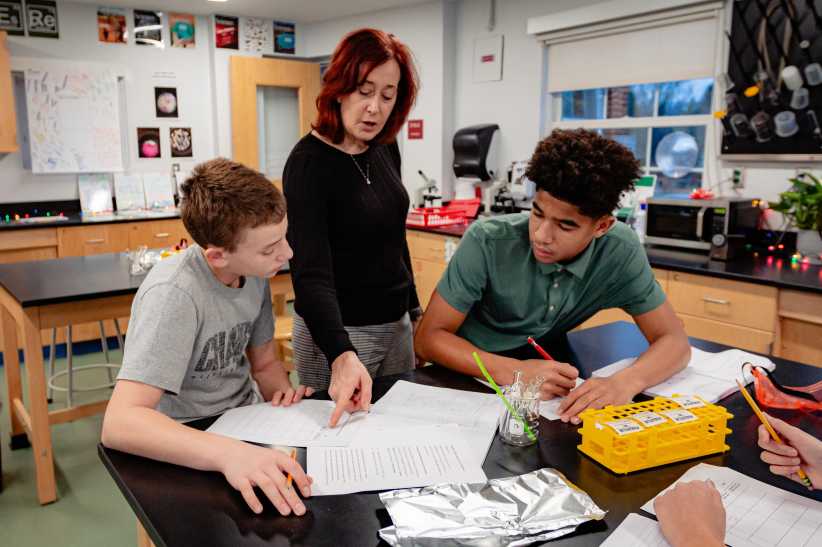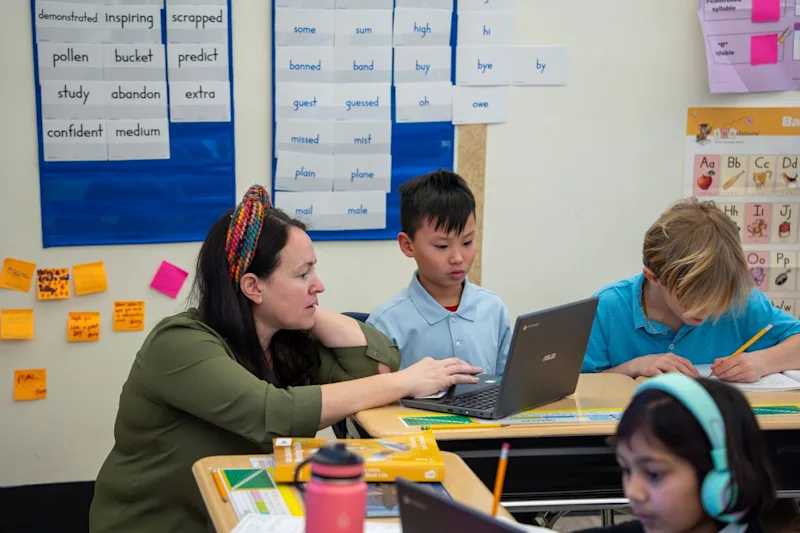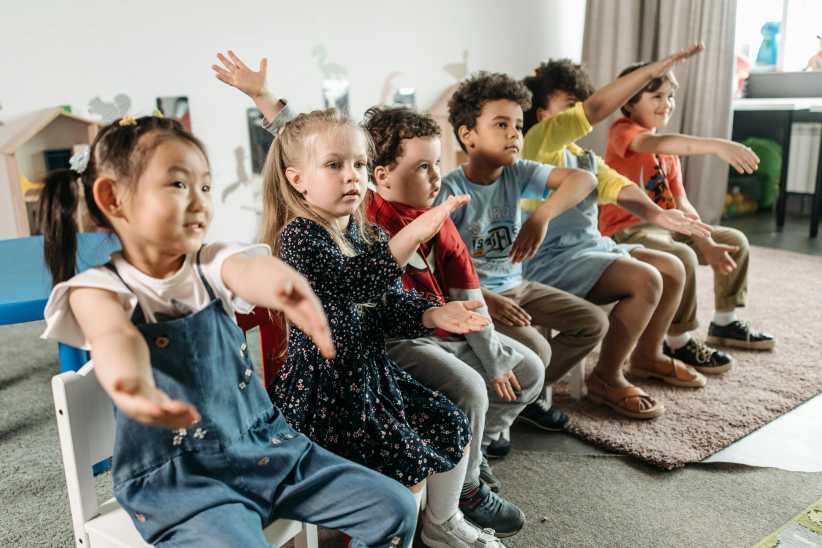
In the five months since COVID began disrupting classrooms, it has become clear that most parents feel some level of frustration with having to homeschool their kids. After all, we weren’t trained or prepared for this. The degree of frustration varies, depending on the parents’ work schedules and how much they enjoy teaching, as well as the age of the children and how well they learn independently, etc. In April a parent told me “I thought I knew how to do long division, but the way they teach it now makes no sense. On Wednesday, we both ended up in tears and no one learned to divide.”Another parent in May: “I actually think my daughter’s forgetting how to write. Is that possible?” Suffice it to say, there are new variables and new frustrations daily, with another school year just around the corner.
While it was not uncommon for the full-day schedule to face criticism in the recent past, it’s now an idyllic oasis many wish to return to. But with the pandemic still very much active, it doesn’t seem likely that it will be safe enough to return to school full time in September.
Unfortunately, there is no magic solution to replace the full day school experience. For seventeen years, I have been in the trenches with families and students, navigating the curricula and challenges of NYC schools. At Ivy Tutors Network, we speak to families night and day about what is working and what is not and how that is evolving each week as the pandemic continues with its unprecedented disruptions. After five months of conversations with parents, kids, schools, and other educators, we’ve put together a list of five ways to make pandemic learning a bit more bearable. Hope they help!
Psst…Follow these Back-to-School Tips to Protect Against COVID-19 for in-person learning.
Create Homeschool Groups or Learning Pods
The homeschool “pod” has received a lot of attention in the last couple of weeks. It’s a straight-forward and flexible concept that can be designed in many creative ways.
If your child will be physically attending school (assuming that’s allowed in some capacity and you are comfortable with it), she or he will be in contact with several other classmates — we’ll say nine — who will likely be part of the same staggered learning group. If this group of students is allowed to be in school on Tuesdays and Thursdays, anywhere from 2 to all 9 of the same group can meet as a homeschool pod and vary their meetings between outdoor learning, indoor learning and online learning to form a study “pod” on Mondays, Wednesdays, and Fridays. This gives parents time to work and effectively completes a full school week for the kids.
Families choosing not to enroll their children in school this Fall can group their students with those of neighbors, siblings, cousins, or children of colleagues with similar needs. If the pod is expected to meet in person, we’ve found that families are choosing other families they have already been in contact with and trust to follow safety precautions. If creating a virtual pod, we recommend taking advantage of the larger pool to choose from and grouping by grade level and/or school.
- The learning pod concept can be molded to fit almost any age group — we’ve recently spoken with parents of kids ranging from two to eighteen years old who are looking to enroll their children in pods.
- We are helping families build out groups and curricula that take 2-3 hours of coursework daily and “meet” approximately three times per week. These groups will help hold each other accountable for classwork given by the school, handing in homework assignments, and completing assessments, as well as possible additional help as needed (including enrichment through a book club, science experiments, executive functioning games, chess, etc.).
- The group may hire an educator or babysitter (ranging anywhere from roughly $10 – $50 per hour, per child) or work independently if the students are older.
- Of course, any group meeting in person should exercise diligence and caution to limit exposure to infection, including at least daily temperature checks, 6-foot distancing wherever possible, mask wearing, and frequent hand washing and/or sanitizing.
Homeschool pods solve a lot of problems. Whether in person or online, by working in a group kids stay engaged and have social interaction built into their day. This allows working parents to focus on their jobs or assist parents who can use a hand in teaching (if there was doubt before, more of us than ever before now know being a teacher can be very difficult.)
The downside of the learning pod is that it can be a logistical nightmare to plan and execute and it’s out of budget for many families. After all, you’re effectively planning your own small-scale (private) school several days per week. People are scrambling to find solutions for these issues.
I know personally for my business we are working to provide some reduced and no-cost spots in the pods we are overseeing. Hopefully, this is the case with other programs, too. The outpouring of help has been profound in some instances — we’ve spoken with parents who have called to offer to pay for spots for other student; and to PTAs of public schools and incredible charitable organizations who are working furiously to make funding available to those who need the homeschooling support and are not able to have access to it. These efforts will not cancel out the systematic inequalities in our economy and society, many of which have been amplified by the pandemic, but hopefully, they are helping forge the path toward that end.
Skill-Share
If it takes a village to raise a child, it’s time to call in the village! Can grandma do a Zoom gardening class with your learning pod every Wednesday at 2 pm? Can you take on the English curriculum while another parent handles math? Involving anyone and everyone in your learning pod is a good way to create a really meaningful and memorable semester. Here are two creative ideas that have various applications for different age groups:
- Pen pals: Have kids write daily letters (even by hand, maybe?!) to friends, family, or even celebrities. Letter writing hones many skills and it’s exciting to send and receive letters back. Is your postal worker friendly? Play a game, counting the number of envelopes received daily and then make a graph to find how long it takes on average to receive replies to your letters.
- Interviews: Schedule video calls with family, friends, or neighbors daily to give parents a break. Have kids interview various people in your “village” to learn about their jobs and career paths. Where did they go to school? Where have they lived? Write reports, find patterns, have kids do further research on new things they learn from the interviews.
Embrace the Internet
While too much screen time is never good, it’s important to admit that we live in a world with fantastic online education content and much of it is free. There are too many resources to name here, but Khan Academy is a top contender, covering most subjects and levels for grades K-12. At the bottom of this article you’ll find a great list of resources for elementary school-aged kids. Middle school and high school students should be encouraged to seek out additional courses, based on their interests. Many top tier universities offer non-credit classes for free, as do resources like Coursera.
Don’t Overdo It
Remote learning, sheltering in place, social distancing, wearing masks, not going to school, not seeing loved ones, the fear and reality of disease around us … is all extremely difficult for kids and adults alike. The good news is that individual and small group learning can condense the interactive learning experience, often taking less time than large classroom learning. So give the kids (and yourself) a break to veg on the couch, read, snack, scream into a pillow, run in circles, etc. The key is to change your expectations. This is not a normal year. We’re all in this together.
Stay Organized
Most important of all is having a schedule for all members of the household. For those who work from home, it is imperative that the kids know when you are available for questions, homework help, food breaks, taking walks, etc. We suggest planning each day in 15-30 minute increments. If at all possible, plan meals in advance and put them on the schedule also. It’s nice to look forward to certain activities or favorite foods; seeing something fun 30 mins away makes it easier to get through a tough homework assignment or wait for dad to get off the phone to go to the playground. Sometimes the schedule will be followed, sometimes it won’t (see “Don’t Overdo It” above). But make the schedule anyway. Re-evaluate the schedule often as a family to see if it’s working, asking the kids for input. While the discipline of scheduling takes at least a couple of weeks to get used to and might not feel like it suits your family’s style right away, it is a true magic wand when it comes to switching from family time to homeschool-work time. We urge you to not give up on it.
Remember and repeat: This is not a normal year. We’re all in this together.
You got this!






















